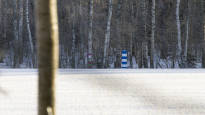The big question is how far the Russian authorities are really ready to let the situation go, thinks Russia correspondent Heikki Heiskanen.
Heikki HeiskanenRussia correspondent
MOSCOW Asylum seekers who crossed the land border in southeastern Finland raise the question of whether a new trend has begun in the situation on Finland’s eastern border.
You can’t just walk into Finland like that: border control is known to be strict on the Russian side as well.
Land border crossings have been quite rare on the border between Finland and Russia. In addition, moving in a rather sparsely populated area in the middle of the coldest winter is risky.
The border guard under the FSB of the Russian security service controls traffic in the border zone. The zone is wider in Russia than in Finland. For example, in Vyborg, it extends right up to the city gates.
‘s film crew also has first-hand experience of that – the border authorities do not like to watch foreign journalists in the border zone.
There are several checkpoints on the road to the border station, and unauthorized passers-by quickly fall into the hands of the authorities.
Despite all of this, someone has most obviously succeeded in transporting the newcomers quite close to the border.
Of course, it is also worth considering that even in Russia there are not enough guards for every meter of the long border.
If the Russian security authorities started to watch border crossings between their fingers across the land border to Finland, it would be a new and worrying turn in the border tensions.
It may be possible that when the weather warms up in the spring, crossing the Finnish border through the forests will become a more attractive option and the number of visitors will start to increase.
At this point, however, it seems premature to assess how widespread the phenomenon really is.
The arrivals may partly be people who were stuck in Russia when Finland closed the border. The organizers of their trip may be under pressure to take care of paying customers until they arrive. It is worth remembering that, in addition to politics, the game also involves direct shady business.
A Russian publication operating in Europe Novaja Gazeta writesthat the scheme is run by Syrian “entrepreneurs” who have lived in Russia for a long time, in practice people smugglers who have Russian citizenship.
Also the Russian investigative journalism publication The Insider has written of two so-called entrepreneurs who have helped large numbers of people from the Middle East and Africa to Russia and further to the EU region.
It is clear that such “entrepreneurs” could hardly continue their activities for a long time without the tacit approval and cooperation of the Russian authorities.
In the past, the Russian authorities have appealed to international law: they do not have the right to prevent people from leaving the country through an official border crossing if their documents are in order on behalf of Russia.
As if to emphasize this, the authorities have detained foreigners whose Russian visas have expired near the border. Many of them ended up in temporary detention centers awaiting deportation.
It is unclear whether the Russian authorities would now like to organize a similar large-scale drama of human suffering on the border, as was seen on the border between Belarus and Poland in 2021.
At that time, Belarus directed thousands of people from the Middle East and Asia who wanted to go to Europe to the Polish border. Poland tried hard to prevent the arrival of newcomers.
Such an operation would begin to require much more effort and resources from the Russian authorities than at present.
Hundreds or even thousands of migrants in the forests of Finland and Russia in the middle of harsh winter conditions could certainly create a spectacular media spectacle. Images of desperate people in the freezing cold might make the Finnish government’s line seem inhumane.
But on the other hand, it is unclearwhat Russia would ultimately achieve with such media attention.
For example, the plight of migrants who sought Poland from Belarus does not seem to have particularly affected Poland’s international position.
In the current political climate in Europe, there is not particularly widespread sympathy for asylum seekers. EU member states are unlikely to be under very strong pressure to open their borders to newcomers – especially if the situation can be explained as a Russian hybrid operation.
By guiding even more asylum seekers across the Finnish border, Russia would essentially ensure that Finnish border crossings remain closed in the future. Of course, that can also be the goal.
